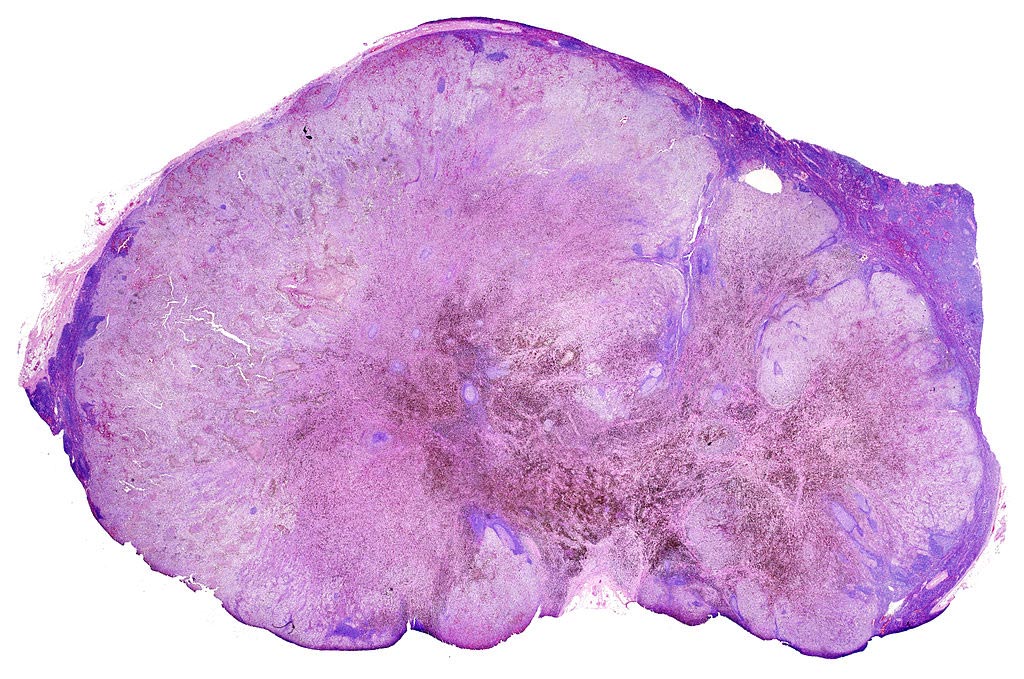Enzyme Pair Identified as Target for Melanoma Chemotherapy
By LabMedica International staff writers
Posted on 07 Dec 2017
A team of cancer researchers has identified a pair of enzymes that they say could serve as therapeutic targets whose inhibition would block the growth of metastatic melanoma.Posted on 07 Dec 2017
Bromodomain and extraterminal domain inhibitors (BETi) represent promising therapeutic agents for metastatic melanoma, yet their mechanism of action remains unclear. BET inhibitors are a class of drugs with anti-cancer, immunosuppressive, and other effects that are in clinical trials in the United States and Europe and are widely used in research. These molecules reversibly bind the bromodomains of bromodomain and extraterminal motif (BET) proteins BRD2, BRD3, BRD4, and BRDT, and prevent protein-protein interaction between BET proteins and acetylated histones and transcription factors.

Image: A lymph node with almost complete replacement by metastatic melanoma. The brown pigment is focal deposition of melanin (Photo courtesy of Wikimedia Commons).
Investigators at Mount Sinai School of Medicine (New York, NY, USA) reported in the November 16, 2017, issue of the journal Molecular Cell that they had identified AMIGO2 (Adhesion Molecule With Ig Like Domain 2), a transmembrane protein, as a BET target gene essential for melanoma cell survival. AMIGO2 was upregulated in melanoma cells and tissues compared to human melanocytes and nevi, and AMIGO2 silencing in melanoma cells induced G1/S arrest followed by apoptosis.
The investigators also reported that they had identified the pseudokinase PTK7 (Protein Tyrosine Kinase 7) as an AMIGO2 interactor whose function was regulated by AMIGO2. These results explained the mechanisms underlying the therapeutic effects of BETi in melanoma and suggested that the AMIGO2-PTK7 axis was a targetable pathway for treatment of metastatic melanoma.
"Melanoma is the most aggressive form of skin cancer, affecting more and more patients," said senior author, Dr. Emily Bernstein, associate professor of oncological sciences and dermatology at Mount Sinai School of Medicine. "While immunotherapy and targeted therapies have significantly improved the outcome for some metastatic melanoma patients, they have had success in a small subset of patients and can cause significant toxic side effects. Thus, their limitations underscore the need for new therapies, highlighting the importance of this research's discovery of novel targets."
Related Links:
Mount Sinai School of Medicine




 assay.jpg)









